Hittites 1700 to 1200 BC
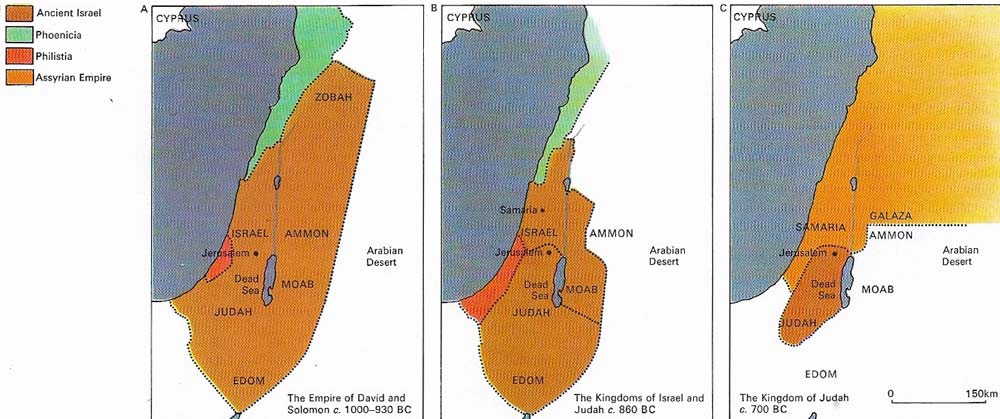
Figure 1. Biblical tradition holds that the ancient Tribes of Israel escaped from slavery in Egypt in the 13th century BC under Moses. After conquering parts of Canaan in the 12th century, Israel reached its peak under David (c. 1000–960 BC), who took Jerusalem and subjugated the surrounding nations (A). This empire divided after Solomon's death into two smaller and weaker nations, Judah in the south and Israel in the north (B), both declining in the face of Assyrian rule (C).
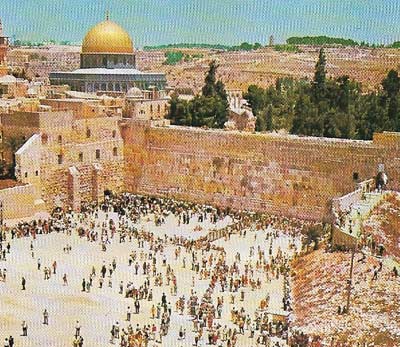
Figure 2. The Dome of the Rock, a Muslim shrine on the spot where Mohammed is believed to have risen to heaven, is on Mount Zion, the site of the Temple of Jerusalem. The Wailing Wall (the western wall of the second Temple) is a place of worship.
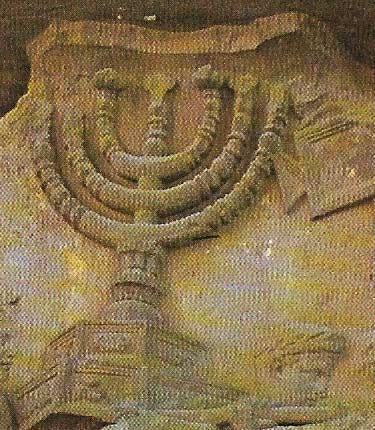
Figure 3. A seven-branched candlestick of the type used in the Temple of Jerusalem is shown here on the Arch of Titus in Rome, built after the destruction of Jerusalem by the Romans in AD 70.
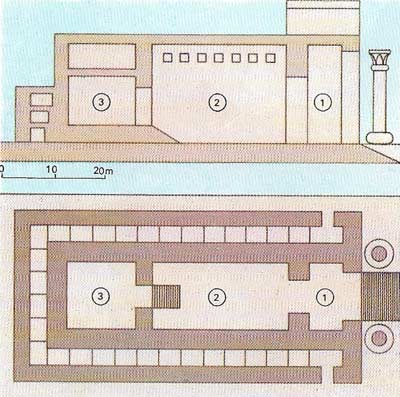
Figure 4. The first Temple of Jerusalem built by Solomon, of which nothing re-mains today, was a shrine for the ark, sacred vessels and offerings, with a courtyard for worshippers. It consisted essentially of a hall (1), shrine (2), and inner sanctum (3), or Holy of Holies, where only the high priest was admitted.

Figure 5. In Hebrew history a number of prophets arose who commented on society and rebuked the insincere practice of religion. Like Isaiah, depicted here by Michelangelo, the prophets taught belief in one God who was just and merciful and required similar qualities from His followers.
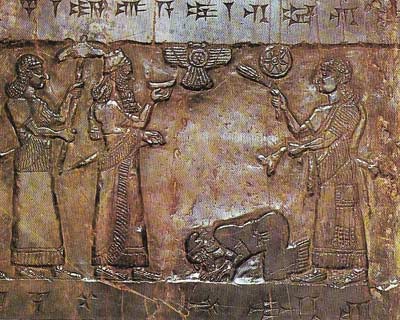
Figure 6. Evidence for the relations of the Hebrews with more powerful neighbors appears in a Mesopotamian relief showing the King of 'Israel, Jehu, paying tribute on his knees to Shalmaneser III, King of Assyria, about 840 BC. Israel was conquered by the Assyrians in 721 BC, and the southern kingdom of Judah eventually fell in 586 BC.
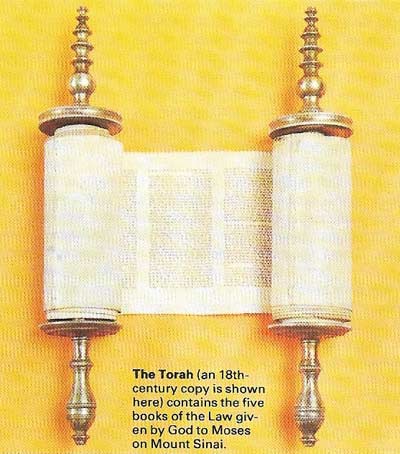
Figure 7. A copy of the Torah.
The name Hebrew is of uncertain origin and meaning. A similar name, Habiru, appears in documents of the 14th century BC describing races or classes of people, perhaps semi-nomads, who inhabited the northern fringes of the Arabian desert. "Hebrew" has been associated with Eber, the grandson of Shem (Genesis 24) and the forefather of all the Semitic peoples.
The twelve tribes of Israel
The early Hebrews were nomads and tradition tells of the migration of Abraham from Mesopotamia into Canaan, an area later called Palestine, on the borders of Egypt. Abraham's grandson Jacob, renamed Israel ("striver with God"), had 12 sons from whom descended the biblical 12 tribes of Israel. The Bible tells how Jacob's sons sold their brother Joseph into slavery in Egypt. When famine broke out in Canaan Joseph, who had found favor in Egypt, received his father and his brothers there and they prospered for many years. Much later, their descendants were enslaved, possibly during the reign of Seti I (reigned c. 1309–1291 BC); their eventual emergence from captivity was organized by Moses.
Both Moses and the Exodus that he led have an historical stamp because to this day they remain in the consciousness of the Hebrew people. According to tradition Moses was brought up by an Egyptian princess and only later in life did he identify him-self with his own Hebrew people. Moses was told by God in a vision to deliver the children of Israel from the captivity of Egypt and lead them into the promised land of Canaan.
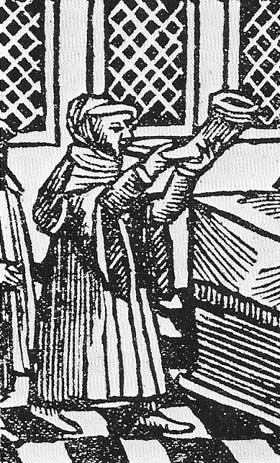 |
| The Passover, the feast celebrating the deliverance of the Hebrews from captivity in Egypt used to be introduced by a blast on a ram's horn. This woodcut is taken from a book of Jewish customs. |
The date of this Exodus is uncertain, but it may have taken place in the fourteenth or 13th century BC. The captives escaped across the northern end of the Red Sea into the desert and went to Mount Sinai or Horeb. The Law, revealed to Moses on Sinai according to the biblical record, consisted of the Ten Commandments or Decalogue inscribed on stone and later kept in an ark or chest. The longer Law, or the Torah of "five books", the Pentateuch, is traditionally attributed to Moses.
In their present form much in these books suggests a settled agricultural community as well as a nomadic existence. They include the death of Moses, and the later Temple and rituals were based on them. Moses was followed by Joshua and a series of judges and kings who led the invasion and gradual occupation of Canaan, the eventual goal. Saul was the first Hebrew king, successful in defeating some tribes such as the Amalekites, but was himself killed by the Philistines.
David, Israel's greatest king
David has always been regarded as a great Hebrew, second only to Moses. He was as successful as Saul in uniting the tribes and was an able administrator (Figure 1) as well as a poet – many of the Psalms are attributed to him. David captured Jerusalem from the Jebusites and made it his capital. The ark containing the Law, which had lodged in different places since the desert wanderings, was brought to Jerusalem, and when Solomon inherited this united kingdom he built the Temple in Jerusalem (Figures 2 and 3) for the ark and a larger palace for himself, financing both by taxation and using forced labor to construct them. Discontent boiled over after Solomon's death and the kingdom was irreparably divided. His weak son Rehoboam managed to hold only the southern country round Jerusalem, in a kingdom that came to be known as Judah (Judaea). His brother, Jeroboam, broke away with ten tribes to form a northern kingdom called Israel, with two rival shrines at Dan and Bethel. The following centuries saw the rivalries of Judah and Israel and the destruction of the northern kingdom by Sargon II of Assyria in 721 (Figure 6).
The small kingdom of Judah lingered on in semi-independence for more than a century, until finally it fell in 586 BC and most of its leading figures were taken in captivity to Babylon. The northern tribes of Israel had been scattered and lost (the ten lost tribes) and hence the return from exile after 539 BC was of the leaders of Judah.
The Hebrew prophets and monotheism
More important for world religion than these political events was the work of the Hebrew prophets. They were inspired men who were sometimes associated with, but often critical of, the official religion of their time. One of the first, Samuel, was priest, prophet, seer and kingmaker. He chose Saul to be the first king of Israel, and also selected David as Saul's successor. Elijah and his servant and follower Elisha both denounced the prophets of Baal and as a result were hounded by the ruling monarchs of their time.
They were followed by a number of other prophets between the eighth and third centuries, whose messages were soon written down. Amos and Hosea preached at Bethel and in Israel, and Micah and Isaiah (Figure 5) in Judah. These men declared the unity of God and His demands of just behavior from the people, a teaching that is termed "ethical monotheism". Through prophetic influence Deuteronomy, a "second law", was promulgated in Judah in 621 BC by King Josiah, who put down rival shrines and concentrated worship at Jerusalem. Jeremiah preached in Jerusalem before its fall in 586 BC and then went to Egypt, while Ezekiel went to Babylon. The latter denounced heathenism and planned the rebuilding of the Temple, whereas Jeremiah taught a more inward religion of a new covenant with God.
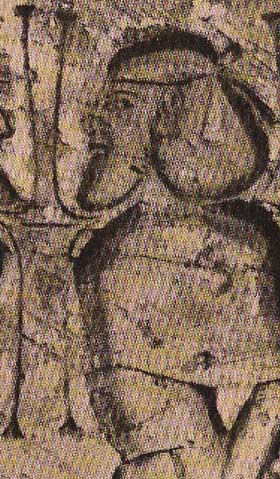 |
| A Canaanite captive being led before Pharaoh was depicted in a temple of Ramesses III in Egypt. The Canaanites resembled the Hebrews in appearance, since both were Semites and had fine noses, long hair and beards. They were finally conquered by the Israelites about 1200 BC. |
